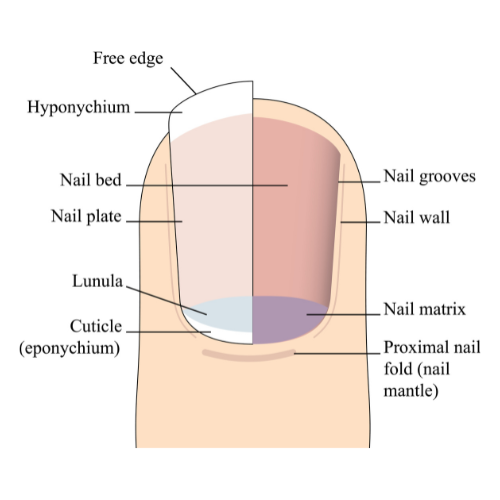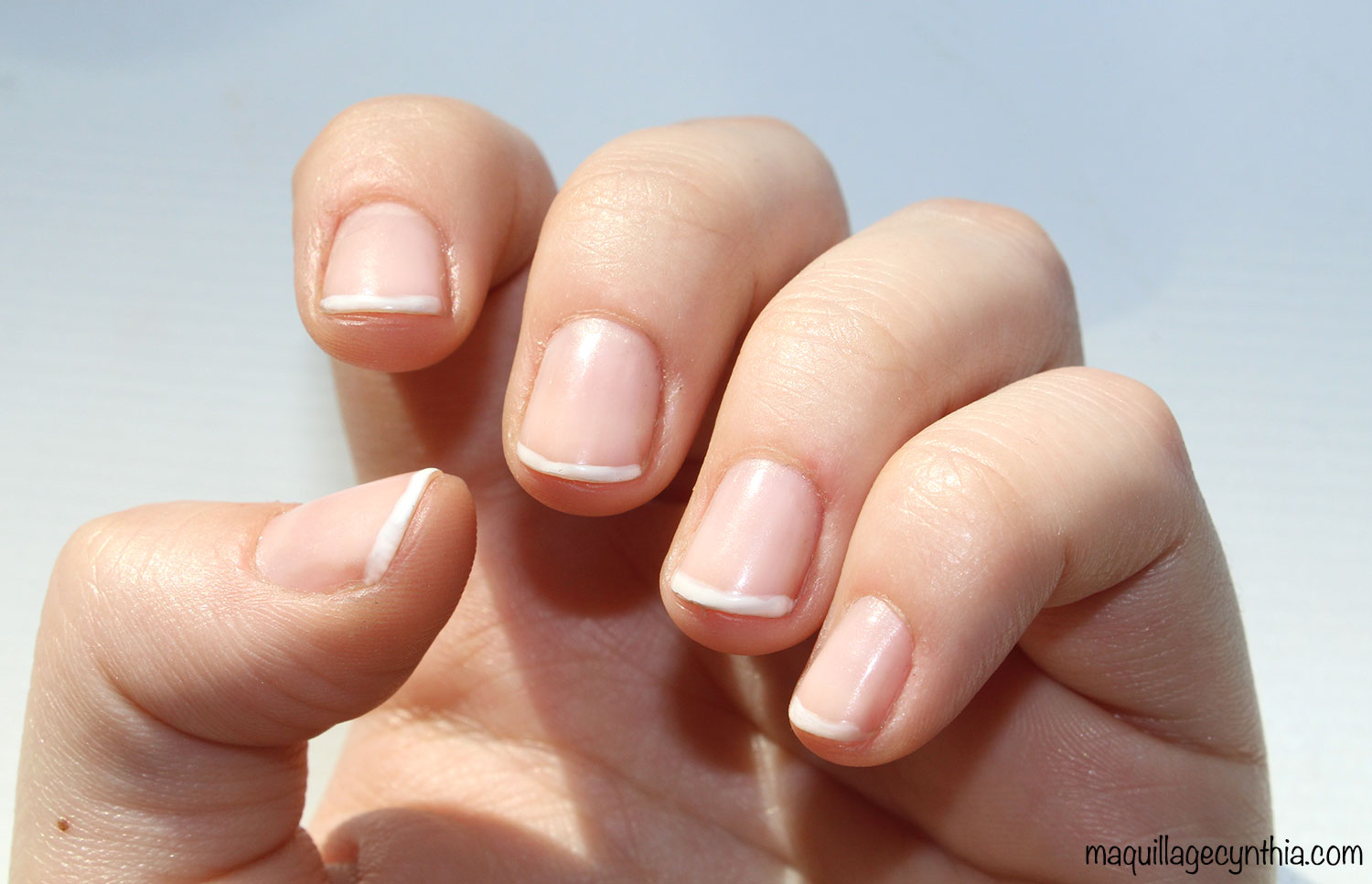What Is A Cuticle?
Everything you need to know about nail care
go back to school with Julie Kandalec, a New York City nail artist known for her A+ manicures on celebs like Camila Cabello, Lucy Boynton, Chloë Grace Moretz, Joe Jonas, and Jessica Chastain. Here, the pro walks you through the ABCs of nail care so that you can ace your next polish job like a pro.
Nail anatomy 101: before diving into a manicure, brush up on your vocab.
perionychium: the skin surrounding the sides of the nail plate.
lunula: the white, half-moon shaped area at the base of the nail.
cuticle: the watertight seal near the base of the nail.
nail bed: the pink area under the nail plate that extends from the lunula to the hyponychium.
nail plate: the actual fingernail made of translucent keratin.
hyponychium: the skin just under the free edge of the nail.

cuticle care 101: think of the cuticle like the gatekeeper for the nail: “it [forms] a watertight seal that prevents dirt and bacteria from entering the nail matrix, which can cause infection or stunt growth,” says Kandalec. In short, cuticles are essential—and they work hard. Keep reading for ways to show yours some well-deserved TLC.
Essential supplies:
cuticle pusher
cuticle nippers
Cuticle oil
oil up. is key to keeping cuticles healthy and hydrated. It also helps prevent hangnails, which occur when the sides of the nail (the perionychium) become dry and separate from the nail plate. Kandalec suggests applying cuticle oil around the perimeter of the nail at least two times a day (for extra credit, apply even more!) and don’t skip the skin under the free edge of the nail. “That area is so frequently forgotten about when we apply hand creams,” says the mani guru. “keeping that skin moisturized prevents a torn hyponychium, which can be very painful.”
push back. “pushing back your cuticles stimulates healthy growth of the nail bed, loosens dry skin, and allows more of the nail plate to show,” says Kandalec. “it also allows you to apply polish further back, making your manicure last longer.” at least twice a week, apply cuticle oil to soften the skin and gently push back cuticles using a metal cuticle pusher with a beveled or square shape.
snip sparingly. “only trim what’s loose to keeps cuticles tidy,” says Kandalec. hangnails happen, and when they do, snip them with a clean pair of sharp cuticle nippers. “keep the nipper blade parallel to the skin—never trim on an angle or the hangnail will still be present and can catch or tear,” she adds. removing the entire cuticle can leave nails vulnerable to infection (especially if done incorrectly) but if you do prefer a more meticulous mani, leave that level of trimming to a trustworthy pro.
nail prep 101: after caring for your cuticles, it’s time to turn your attention to the rest of the nail. “prep is the most important step for polish longevity,” says Kandalec. consider this your cheat sheet for creating a flawless foundation.
essential supplies:
nail clipper
glass nail file
padded buffer
disposable mascara wand
91% isopropyl alcohol
shape up. remove any leftover polish, apply cuticle oil (this gives skin time to soften), and trim tips with a clipper to remove length if needed. for a rounded shape cut the sides of the nail and leave a little length in the middle. for square, cut straight across. then, file nails using a windshield wiper motion. Kandalec prefers a glass file, especially if you have dry or brittle nails: “it will seal the free edge and prevent them from splitting further,” she says.
get buff. push back cuticles and lightly exfoliate the nail plate using a padded buffer between 240 and 180 grit. (FYI, the higher the number, the softer the buffer will be.) begin by gently buffing around the cuticle, where the nail is “new and fresh,” says Kandalec. then, buff back-and-forth horizontally across the nail before switching to a vertical motion that “goes with the grain,” she adds. doing this smooths ridges, helps erase stains, and eliminates any dry skin that may be on the surface of nails.
come clean. post-buff, scrub under the free edge using a bamboo mascara wand dipped in 91% isopropyl alcohol or acetone, which is more forgiving on delicate skin than an orangewood stick, says Kandalec. then, swipe the surface of the nail plate with a lint-free cotton pad saturated in the same isopropyl alcohol (a pre-soaked alcohol wipe works, too!) to remove debris, cuticle oil, and oils naturally picked up throughout the day from hand creams, etc.
stay strong. if your nails are prone to breakage, keep them coated in a strengthener between polish jobs. hard to resist nail strengthener shields tips against daily wear and tear. plus, it provides a hint of tint.

